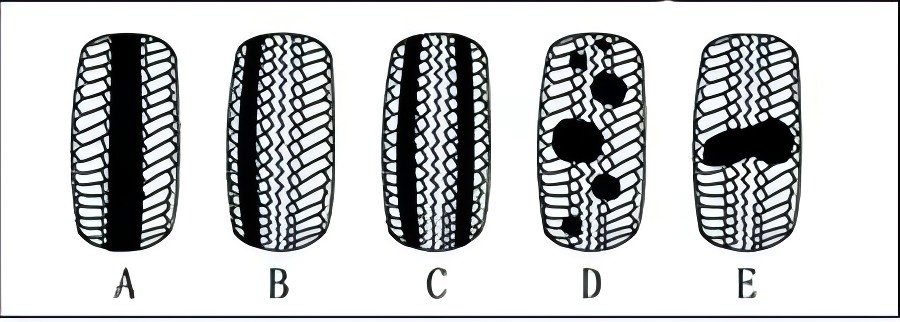If you notice certain wear patterns on your tires, you can determine where the issue with the vehicle might lie.
The tread on tires is very important as it ensures effective traction. As the tread wears down to a certain level, the tire needs to be replaced. The depth of the tread is the key indicator for determining whether a tire should be replaced. Different brands of tires feature wear indicators, which are located in less conspicuous areas on the tire's surface. These indicators signal when the tire should be replaced. Once the tire has worn down to the wear indicator, it means the tire needs to be changed.
Additionally, by observing the tire's contact area with the ground, you can also identify potential issues with the vehicle’s wheel alignment and suspension. This requires careful inspection. Generally speaking, if one tire shows signs of wear, you should also carefully inspect the corresponding tire on the same axle, and even check the other two tires on different axles.
The following image shows different wear patterns caused by various issues. If you notice these patterns, you can assess where the problem lies in the vehicle.

A indicates that the tire pressure is often too high or the vehicle frequently operates under harsh driving conditions.
B suggests that the tire pressure is often too low, causing significant wear on the tread along the sides during turning.
C suggests that the wear is likely caused by long-term vibration or uneven operation.
D indicates potential issues with the suspension or wheel alignment.
E shows wear caused by emergency braking at high speeds, leading to localized wear on certain parts of the tire.



